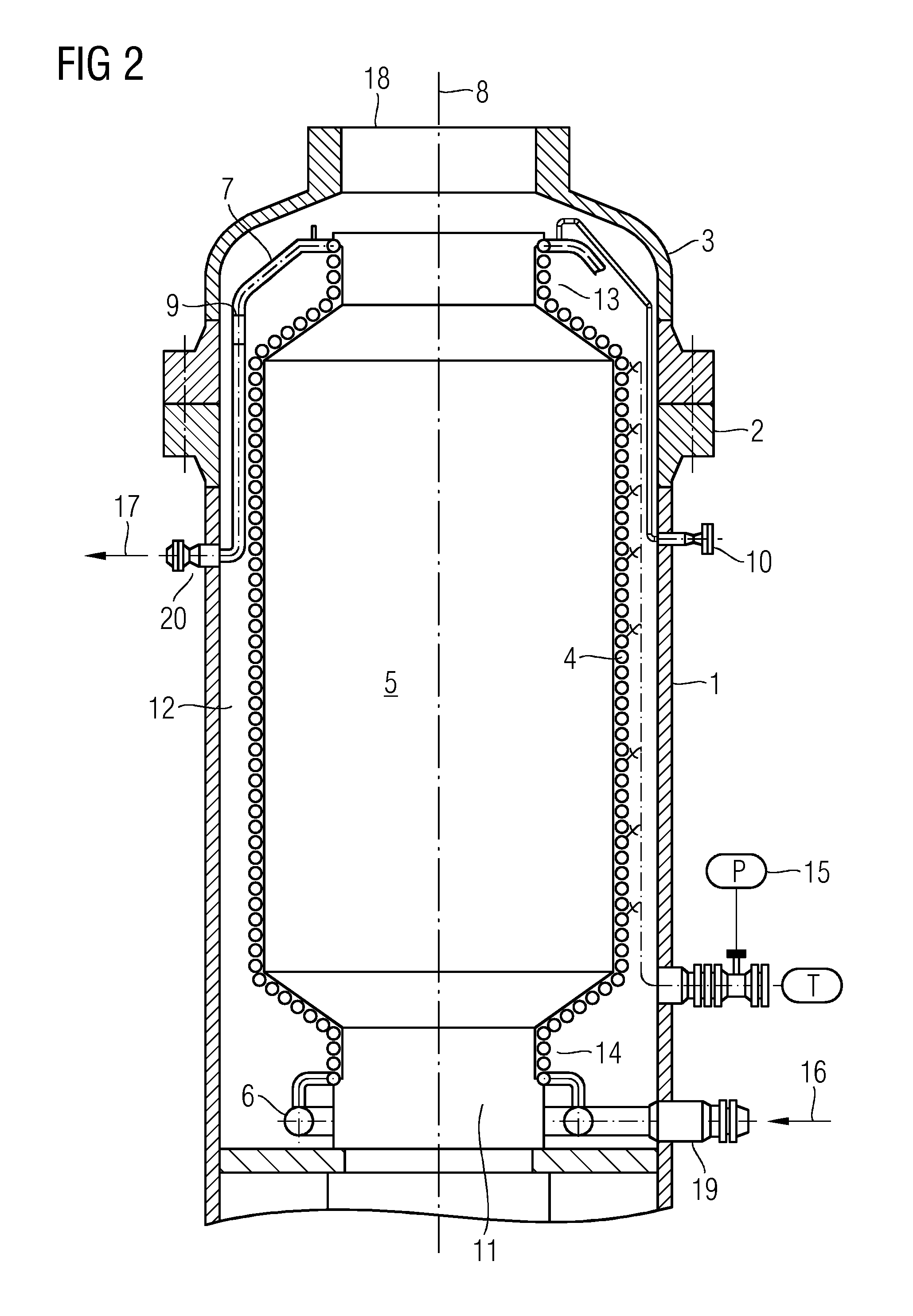In-line gasifier having a cooling jacket with pipework passing through the side of the pressure cladding
a gasifier and pressure cladding technology, which is applied in the direction of combustible gas production, lighting and heating apparatus, gasification of granular/pulverulent flues, etc., can solve the problems of limiting the nominal size of the cooling water pipe, unable to achieve total emptying for the purpose of avoiding freezing up, and unable to achieve total emptying. , to achieve the effect of reducing the mounting and maintenance effort, improving accessibility, and special quality assurance measures
- Summary
- Abstract
- Description
- Claims
- Application Information
AI Technical Summary
Benefits of technology
Problems solved by technology
Method used
Image
Examples
Embodiment Construction
[0019]The reaction space (5) of a gasification reactor operating under a gasification pressure of up to 10 MPa (100 bar) is bounded by a cooling jacket (4), which is sheathed in a pressure cladding (1). At the head of the device is located the base of the gasification burner (18), through which are fed in the reaction media, fuel and gasification agents containing free oxygen. The gasified gas and the molten slag, which is formed from the fuel ash at the gasification temperature of between 1,200 and 1,900° C., are tapped off through the opening (11). Between the pressure cladding and the cooling jacket is the cooling jacket gap (12). The upper part (13) and lower part (14) of the cooling jacket are tapered.
[0020]The cooling water, which is heated in the cooling jacket, is fed away as hot water and is cooled, making use of its heat content, and fed back to the cooling jacket again as cooling water. The water pressure in the cooling jacket is kept a few tenths of an MPa (a few bar) ab...
PUM
 Login to View More
Login to View More Abstract
Description
Claims
Application Information
 Login to View More
Login to View More - R&D
- Intellectual Property
- Life Sciences
- Materials
- Tech Scout
- Unparalleled Data Quality
- Higher Quality Content
- 60% Fewer Hallucinations
Browse by: Latest US Patents, China's latest patents, Technical Efficacy Thesaurus, Application Domain, Technology Topic, Popular Technical Reports.
© 2025 PatSnap. All rights reserved.Legal|Privacy policy|Modern Slavery Act Transparency Statement|Sitemap|About US| Contact US: help@patsnap.com


